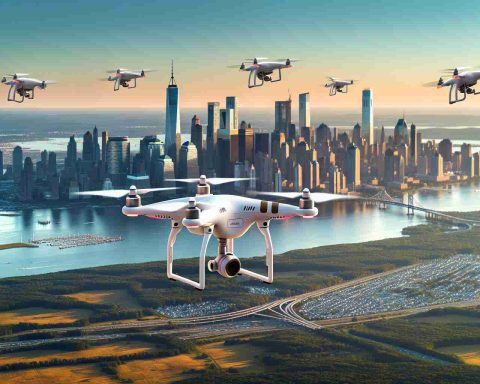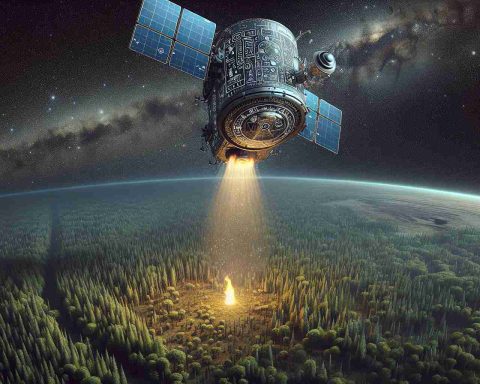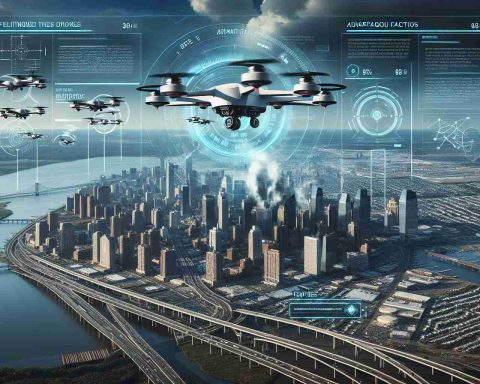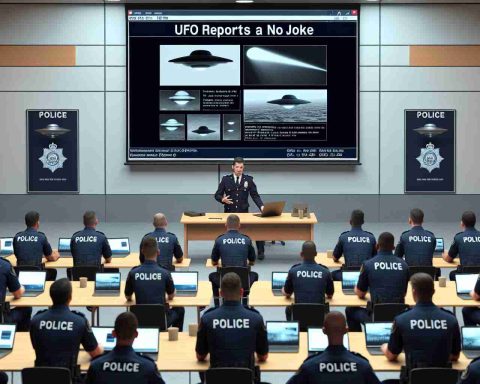The latest launch by China’s private satellite company, GalaxySpace, marks a significant achievement in atmospheric science. The Tianlu-1 satellite has successfully reached its designated orbit, joining two other satellites in the mission. This innovative satellite is equipped with cutting-edge technologies that enhance its capabilities for studying the middle and upper atmosphere, which remain largely uncharted.
Tianlu-1 is designed specifically for limb-sounding detection, enabling it to analyze atmospheric conditions with unprecedented detail. It provides high vertical resolution and multi-parameter detection under any weather conditions, a crucial breakthrough for scientific exploration. The satellite systematically collects essential spatial datasets, revealing vital information such as atmospheric density, temperature, composition, and wind patterns.
The region where Tianlu-1 operates lies between the highest altitudes reached by conventional aircraft and the lowest heights of orbiting satellites, making it a largely unexploited domain. By acquiring significant atmospheric data, researchers can boost extreme weather forecasting, advance studies on space weather, and contribute to climate change understanding.
Developed with three advanced payloads, the satellite captures comprehensive vertical profiles vital for atmospheric analysis. Looking ahead, GalaxySpace anticipates a series of missions that will enhance China’s satellite communications and navigation systems, paving the way for greater applications of high-altitude platform technologies.
Tianlu-1’s launch is not just a technological milestone; it could redefine how we understand our atmosphere and its complex dynamics.
The Broader Implications of the Tianlu-1 Satellite Launch
The launch of the Tianlu-1 satellite by GalaxySpace signifies more than just a technical achievement—it is a pivotal moment with far-reaching implications for society and the environment. This venture into the uncharted realm of the atmosphere stands to enhance our understanding of climate change, potentially shifting the trajectory of global climate policy.
As the climate crisis intensifies, accurate atmospheric data is increasingly critical for shaping effective responses. The ability of Tianlu-1 to provide comprehensive datasets on atmospheric conditions promises to improve extreme weather forecasting. Enhanced forecasting can mitigate the societal impact of natural disasters, offering communities more effective warnings and responses.
The launch also has significant economic implications. By bolstering satellite communication and navigation systems, it may stimulate growth in the tech sectors involved—encouraging investment and innovation in both satellite technology and atmospheric science. This kind of expertise is essential in a world where data-driven decisions are becoming the norm for businesses and governments alike.
Moreover, the environmental effects of the advancements brought about by Tianlu-1 could extend to monitoring air quality and understanding the interactions between the atmosphere and human activity. This knowledge could drive sustainable practices globally as nations strive to meet their carbon reduction targets.
In summary, the Tianlu-1 satellite serves as a crucial instrument not only for atmospheric research but also as a catalyst for broader societal shifts, technological advancements, and climate action. It underscores the need for continued investment in space technology as we grapple with pressing global challenges.
Unlocking the Atmospheric Mystery: How GalaxySpace’s Tianlu-1 is Changing Our Understanding of Weather and Climate
Overview
The launch of the Tianlu-1 satellite by GalaxySpace marks a significant leap forward in atmospheric science, with its capabilities poised to enhance weather forecasting, climate research, and our understanding of space weather phenomena. With its advanced technologies and innovative design, Tianlu-1 is set to explore the largely uncharted territory of the middle and upper atmosphere.
Key Features of Tianlu-1
1. Limb-Sounding Detection:
– The satellite’s limb-sounding capability allows it to collect detailed vertical atmospheric profiles. This unique method enhances its ability to analyze and interpret atmospheric conditions with incredible precision.
2. Multi-Parameter Detection:
– Tianlu-1’s sensors can simultaneously measure various atmospheric parameters, including density, temperature, composition, and wind patterns. This multi-faceted approach provides a comprehensive view of atmospheric conditions.
3. High Vertical Resolution:
– With its advanced technology, Tianlu-1 achieves excellent vertical resolution, enabling researchers to gather essential data even under challenging weather conditions, which traditional methods might struggle to capture.
Use Cases
– Extreme Weather Forecasting:
The data collected by Tianlu-1 can significantly improve the accuracy of forecasting extreme weather events, such as hurricanes and thunderstorms, by providing timely and detailed atmospheric insights.
– Space Weather Studies:
The satellite’s capabilities extend to researching space weather, which affects satellite operations and communication on Earth, as well as influencing global positioning systems.
– Climate Change Research:
By contributing to a better understanding of atmospheric processes, Tianlu-1 aids in climate change studies, helping to identify trends and impacts that are crucial for policymakers and researchers alike.
Innovations and Future Missions
Tianlu-1 represents a breakthrough in satellite technology, developed with three advanced payloads specifically tailored for atmospheric analysis. GalaxySpace envisions a series of future missions that will further integrate high-altitude platform technologies into China’s satellite communications and navigation systems, enhancing capabilities across various sectors.
Pricing and Market Analysis
While specific pricing for the Tianlu-1 satellite remains undisclosed, investments in atmospheric satellites have surged globally, reflecting a broader trend in prioritizing climate and atmospheric research. Market analysts predict continued growth in this segment, driven by increasing demand for reliable data to combat climate change and improve weather forecasting.
Pros and Cons
Pros:
– Unprecedented atmospheric data collection and analysis
– Advanced technology to operate in challenging conditions
– Contribution to vital scientific fields like weather forecasting and climate change
Cons:
– High development and operational costs
– Potential data privacy and security concerns related to satellite operations
Conclusion
The successful launch of Tianlu-1 is not just a technological achievement for GalaxySpace but a pivotal moment for atmospheric science. By enabling unprecedented atmospheric exploration, it paves the way for innovative research and applications across various fields. As we continue to confront the realities of climate change, tools like Tianlu-1 will be essential in providing the data needed for effective solutions. For more information on space exploration advancements, check out GalaxySpace’s website.
This emerging technology promises to redefine how we understand atmospheric complexities and highlights the critical role that satellite missions will play in our future climate resilience strategies.




















